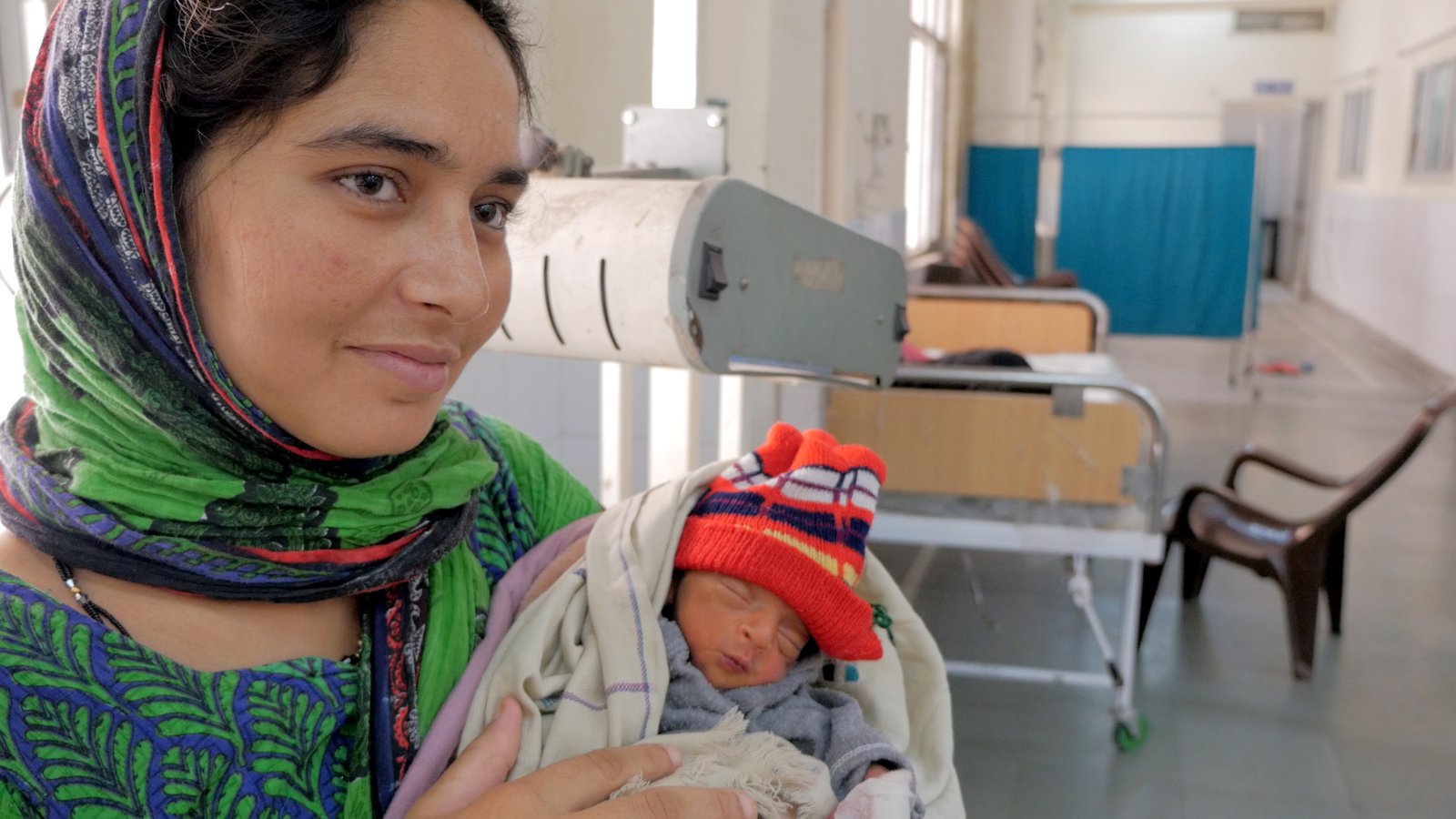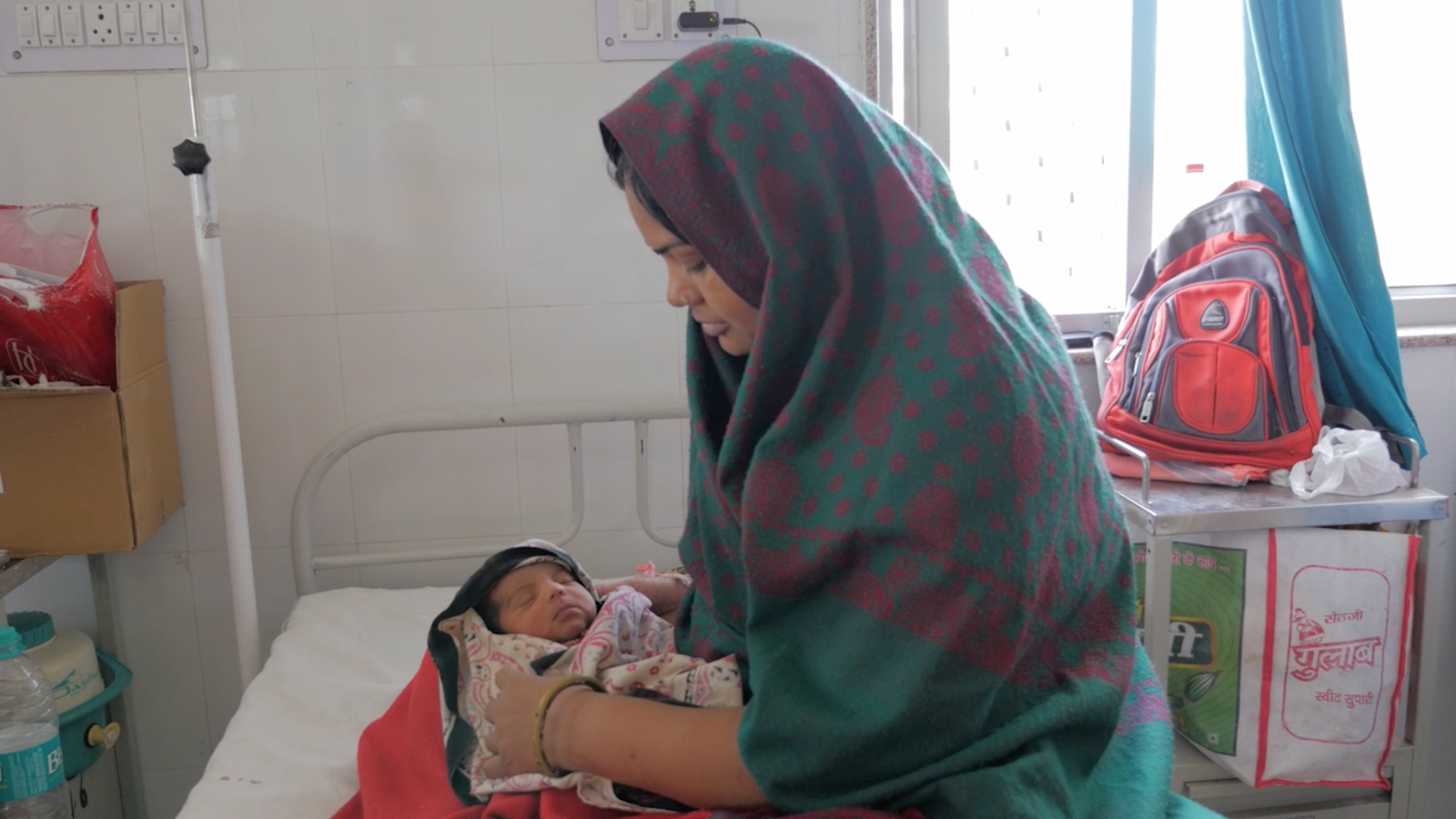Ask Dr. Jayashree Mondkar what she loves to see, and she’ll say a happy, active baby.
“When you see them,” says Dr. Mondkar, professor and head of neonatology at Lokmanya Tilak Medical College and Municipal General Hospital in India, “it feels very nice when they come back chubby and happy and smiley in the well-baby clinic.” It’s especially moving if the baby’s life began preterm or in distress in the neonatal intensive care unit (NICU).
There is a reason why more well-nourished and happy babies are showing up at follow-up visits in hospitals like Mondkar’s. Across India, vulnerable newborns are gaining greater access to human breastmilk through facilities that incorporate human milk banking. They’re part of a growing system of comprehensive hubs where lactating women can donate milk and new mothers can receive breastfeeding support. In these hubs, families also learn about low-cost interventions such as skin-to-skin Kangaroo Mother Care (KMC), the importance of hygiene, and other programs aimed at strengthening essential newborn support.

In India, an estimated 30 to 50 percent of the most vulnerable babies in neonatal intensive care units (NICUs) need and would benefit from donated human breastmilk. Photo: PATH/Tom Furtwangler.
Something had to be done
Dr. Armida Fernandez, former dean and head of neonatology at Lokmanya Tilak Hospital, had a crisis on her hands. It was the late 1980s and she was faced with thousands of vulnerable preterm and low-weight newborns.
“Twenty-five years ago, we were losing a lot of babies to diarrhea and sepsis,” says Fernandez. “We looked into the reasons why, and we were using formula milk, we were using bottles. And then we knew the source.” The hospital staff had been using bottled formula in cases where mothers were unable to breastfeed or provide expressed breastmilk, or the child had been abandoned.

Wherever there is a NICU there is an absolute need for a human milk bank. A large percentage of vulnerable infants in NICUs lack access to their own mother’s milk, often because of maternal illness, death, or abandonment. Photo: PATH/Tom Furtwangler.
Human milk is the ideal food for newborns, it’s easier to digest, and it’s packed with nutrients and natural immunities. This is important especially for low-weight or preterm babies who run a higher risk of infection. But not all mothers were in a position to breastfeed or express milk to give to their babies, especially if their deliveries were unplanned caesareans or the mothers were ill.
“We wanted to bring down mortality… something had to change drastically,” says Fernandez. “We were desperate to save our babies.”

Milk banks not only provide donor human milk to babies in need, they provide a safe way for lactating mothers to donate and store milk. Photo: PATH/Tom Furtwangler.
So the hospital stopped using formula and started using other mothers’ milk to feed the babies. “That was really the beginning,” says Fernandez.
A subsequent visit to a UK milk bank in Oxford showed Fernandez how other milk banks were pasteurizing human milk to ensure safety. “I said, my God, this is something we can do in India.” Fast forward two decades and a renaissance of sorts is taking place across India—and across the globe—as more and more human milk banking facilities open their doors.
At PATH, we are working with technical and policy leaders around the world including in India so all babies have access to human milk by establishing a Mother Baby Friendly Initiative Plus (MBFI+) model that promotes, strengthens, and protects breastfeeding. This is accomplished through integrating breastfeeding promotion, skin-to-skin care (KMC), and providing safe donor human milk for vulnerable babies.
Human milk: the best solution for babies
A recent Lancet series confirms what Fernandez and Mondkar, along with many other experts have known for years: providing human milk to newborns results in fewer infections, increased intelligence, even probable protection against unhealthy weight gain and diabetes, and could prevent an estimated 823,000 deaths in children under the age of five, every year. This is particularly true in low- and middle-income countries where a non-breastfed child’s risk of death is six times that of one who’s been breastfed.

Compared with formula, human milk reduces the risk of infection, necrotizing enterocolitis (a life threatening inflammation of the intestines), diarrhea, and feeding intolerance as well as reduce health care costs. Photo: PATH/Tom Furtwangler.
“In India, we have around 26 million births every year,” says Ruchika Chugh Sachdeva, nutrition team leader at PATH. “One in every seventh child born is preterm and one third of our children are low-birth weight babies. It’s high time we do something about it.”
India has the largest birth cohort in the world. Milk banks provide an additional boost to babies who are born sick, low-birthweight, or premature—especially those in NICUs who lack access to their own mother’s milk. The Indian Government is strengthening the sick newborn care units (SNCU) around the country. Today, there are around 661 SNCUs serving preterm and low-birthweight babies.

Dr. Ajay Khera, Deputy Commissioner, Ministry of Health and Family Welfare, Government of India, meets with local PATH staff including Ruchika Chugh Sachdeva, PATH’s nutrition team leader in India (left, in scarf). Photo: PATH/Tom Furtwangler.
Dr. Ajay Khera, Deputy Commissioner, Ministry of Health and Family Welfare, Government of India, shares his vision, “We would like to make access to human milk an integral component in India’s healthcare system, especially in all major newborn units providing care to sick babies. PATH is playing a very important role by linking human milk bank systems with breastfeeding promotion and newborn care.”
NIFTY cup delivers milk to vulnerable babies who are unable to nurse. It’s an elegantly designed and inexpensive innovation that gives preterm infants and babies the nutritious milk they need to survive. The care doesn’t stop once children leave the hospital. All newborns and their families receive home visitations to improve child-rearing practices and interventions such as breastfeeding which can decrease child mortality by up to 25 percent.
Good deed and many blessings
Raj Bala is part counselor, part motivational speaker. Her client base: new mothers who need lactation support and help learning how to breastfeed their newborn child. A typical day at work may involve working with mothers who experienced high-risk and preterm deliveries, as well as as normal, low-risk births. “I get so many blessing from the family when I help feed their baby,” says Raj. “It is very heartening and I love doing this.”
Raj explains to the mother and her family that mother’s milk helps the baby’s growth, both physically and mentally, while building their immunity to help avoid infections. And families save money as there is no need to buy milk when a mother breastfeeds. Those blessings are really just the beginning.
Another advantage of breastfeeding, she explains to the mothers, is that as they feed their babies, their own bodies get back into pre-pregnancy shape. Plus, producing milk makes it possible to pump extra milk.
“We then tell the mothers,” says Raj, “that they can donate it to the bank and help babies who are sick... We also tell the mothers that it is a good deed.”
A mother pays it forward
“I want to provide my daughter with a good education so she can become something and stand on her own two feet,” says Sheikh Afsana, who adds that she will make sure her daughter is “fed milk on time and given the medicines.”
“I will take really good care of her.”

For mothers who are unable to breastfeed, donor milk is viewed as a blessing. Photo: PATH/Tom Furtwangler.
Although she is breastfeeding now, Afsana was not able to for the first five days after delivery because she had had an emergency caesarean. During that time, her baby was fed with donated human milk from the milk bank.
Initially Afsana had apprehensions so she asked the nurses about the milk. “I was worried about infections… they reassured me that this milk will not lead to any problems or infections to the baby.” Afsana says she will encourage women to donate milk to help each other in the time of need. She also plans on donating her surplus milk so other babies can be saved.
The way forward
Human milk banks are not a new phenomenom, on an institutional level, this intervention has roots in the modern era, dating back to 1909 in Austria. Even so, there are still social, political, and structural barriers that prevent safe implementation of effective human milk banking programs to ensure all infants receive human milk. PATH is working to break down those barriers.
“Since the past two years, the momentum has really been building up in India,” says Ruchika Chugh Sachdeva, PATH’s nutrition team leader in India. “The Indian Academy of Pediatrics has developed human milk bank guidelines. And now, PATH is playing an effective role in strengthening and scaling up human milk bank systems by providing technical assistance to the government for formulating effective guidelines.”

Across India, human milk banks such as this one at Lokmanya Tilak Hospital are increasing in number. Photo: PATH/Tom Furtwangler.
PATH has also facilitated learning exchanges between India and Brazil, a country well-known for its robust human milk banking network. As a result, HMB specialists in India have gotten together and formed a network helping even more hospitals come up with new milk banks by sharing experiences and best practices.
At the core of all this work are the babies. “My heart goes out to the babies.” says Sachdeva. “I really feel we can help them survive, help them gain weight as soon as they can.” She believes that someday, India can play a larger role in helping expand human milk banking internationally as part of the integrated MBFI+ platform through cross-learning and technical assistance to its neighboring countries. And when that day comes, the blessings would be from country to country.
